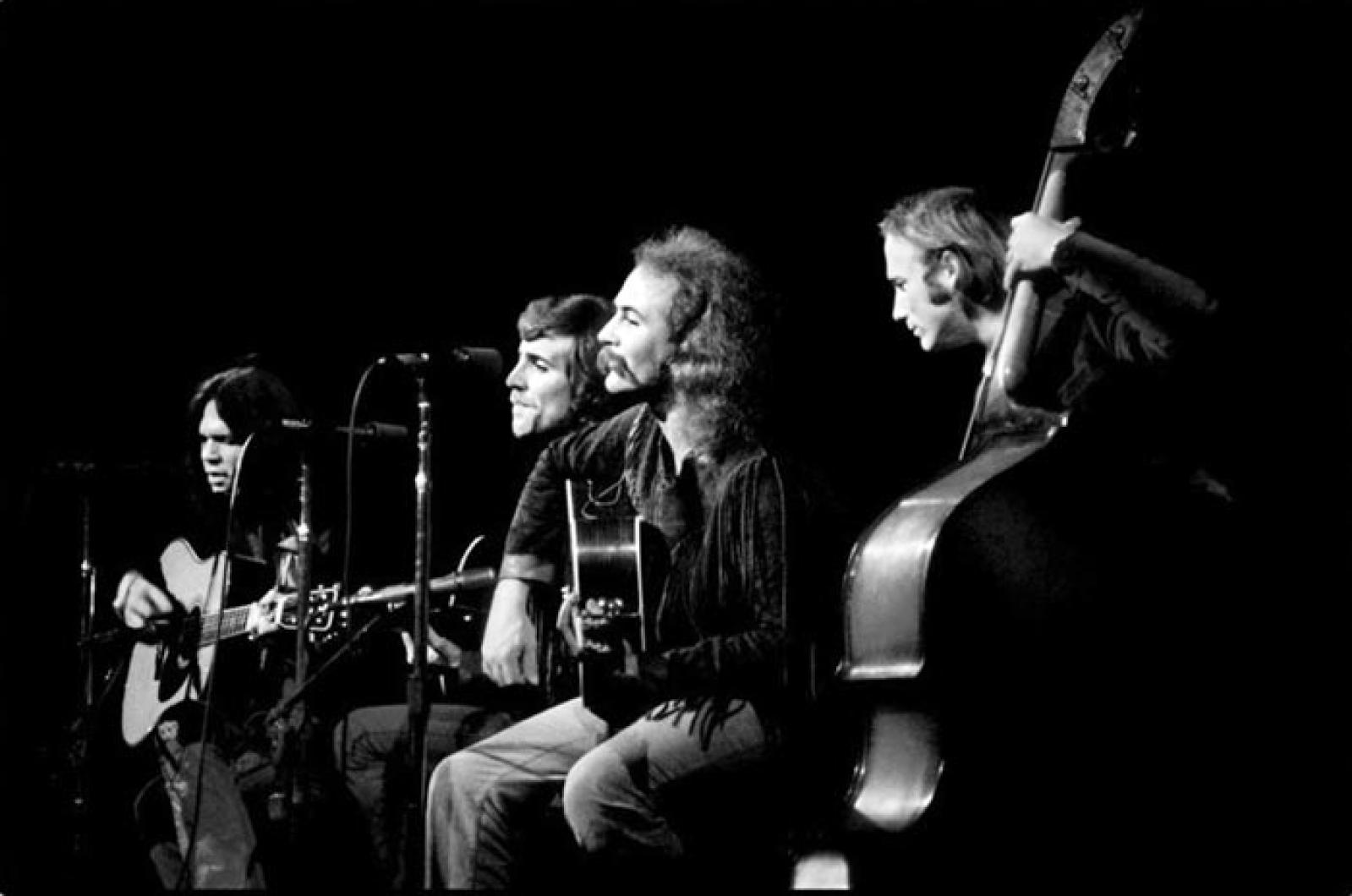In the end, it came down to a shoe box full of microcassettes, 75 interviews, two years of research and a lifetime of listening to Let It Be, Déjà Vu, Bridge Over Troubled Water and Sweet Baby James. For noted rock critic David Browne, a former senior editor at Entertainment Weekly and now contributing editor at Rolling Stone, the common ground between those albums – all released in 1970, all reflecting serious aspects of social transition and also defining his youth and love of music – turned into an unlikely notion for a book that served as history and homage.
“I’d always wanted to do a book about a scene or a time,” Mr. Browne admits. “I’d loved David Hajdu’s Positively 4th Street [The Lives and Times of Joan Baez, Bob Dylan, Mimi Baez Farina and Richard Farina] and Easy Riders, Raging Bulls [How the Sex-Drugs-and-Rock’n’Roll Generation Saved Hollywood, by Peter Biskind].
“I’d always wanted to do that, but what would my moment be?”
Shortly after finishing The 20th Century Is Almost Over, his award-winning Sonic Youth book, the man who’d also written a dual biography of untimely-demised father and son troubadours Tim and Jeff Buckley called Dream Brother, had a conversation with his wife, Maggie Murphy, also a top tier journalist.
“I wasn’t looking for my next book, but we were in the car, driving somewhere and Maggie says, ‘All those records you bought at 12 that you still play you should write about those,’” Mr. Browne remembers. “Then she went on to ask what they all had in common. Was it a theme? A year?”
From that emerged Fire and Rain: The Beatles, Simon and Garfunkel, James Taylor, CSNY and the Lost Story of 1970, a commentary on a nation facing exhaustion from generational upheaval cast against the demise of the biggest bands of the day – and the emergence of an almost new school of popular music: quiet, introspective and decidedly intimate.
“It’s a funny thing about that year. I remember Robert Kennedy and Martin Luther King being killed, but then 1970 was a fog. Kent State happened, the Manson trials, the blowing up of that brownstone in the Village. It was a charged year in a lot of ways – and the political and social changes and currents, you want to weave them into the narrative.
“I didn’t just want it to be a rock book, I wanted the music to be a window into what was happening in the world. So music became the prism, because music and arts very much reflect the time they exist in.”
Indeed, Fire and Rain captures three of pop music’s biggest acts coming apart – and a fourth who doesn’t matter as the book begins. More than a chronicle of who said what or slept with whom first, it illustrates a soon-to-be-multibillion-dollar industry at a crossroad, the pressures exacted and shifting attitudes of the stars and handlers.
While Neil Young, Paul Simon, Paul McCartney, Ringo Starr and James Taylor declined participation – Taylor citing he prefers not to focus on the past, though Mr. Browne had two full days of interviews at his home in the Berkshires for an extensive EW profile – the rest of the principals and many of the intimates were willing to participate. “And the most interesting stuff came from the associates, the people who haven’t been interviewed to death.”
Photographer Henry Diltz, who shot the Sweet Baby James cover and was a friend of Crosby, Stills, Nash and Young, allowed Mr. Browne access to his detailed daily journals. Klaus Voorman, who made music with several Beatles, was another standout source. “His recollections of everything were pristine,” Mr. Browne said.
Given the years, there were several other inherent challenges. Not only had many of sources died, but many of the survivors’ years of drug abuse make their recollections slightly hazy. Certainly, the excesses eroded memories.
“There was one musician who was completely off on dates,” Mr. Browne admits. “But you learn to corroborate through other sources. You’d find alternative people who would remember and there was some going back after you’d find things out to verify.”
If 1970 started out as an extension of the idyllic 60s, it quickly turned hard, sour and angry. Not just in the implosion of the groovy love-all hippie culture succumbing to the encroaching greed and pettiness of the Me Generation, but the youth culture becoming more strident about the politics of the world they lived in. From that tumult emerged a quiet man, who’d had his own issues and made decidedly laid-back music.
If the year began with staggering indifference, it closed with an impending cover of Time magazine for a pop singer of quiet songs, or as Mr. Browne says of the shift: “[James Taylor] represented an exhaustion and a need to chill out. It was looking inside.
“By the end of the 60s, people needed a break from all of it. So it’s not surprising James Taylor became the first one to usher in a new kind of music. It’s funny in researching him, to realize how humbly it had started.
“I reached out to the LA Musician’s Union to get the paperwork for the Sweet Baby James sessions. It was four days, three songs a day. I saw what James got paid, which was $100 a day, less union fees.”
Mr. Browne pauses, measuring the best contrast. “Leland Sklar was remembering sitting there onstage, looking at an empty Troubadour; then a month later, Fire and Rain had hit, the same place was packed, people were not just listening, but singing along.”
Mr. Browne knew, looking back, the ultimate reality of what happened. For him, it was coming to understand – often with the file cards of key events, for the musicians and the culture, that he kept moving around his living room floor — then showing his readers how it happened and what all the strife, tumult and music ultimately meant.
An almost unrecognized watershed was looming: A move from love to discontent to exhaustion was playing out — and pop music mirrored it. Bands that were beyond big faltered, bickered, broke up; a challenged singer quietly stayed his course and found an audience that would make him an act whose music was their life, whose emergence reflected their own and whose legacy remains.
“James Taylor emerges as the symbolic future of both the music and the country. By the end of the year, there’s all sorts of wreckage and he’s the one who’s still standing. Matthew Fox [of the TV series Lost] said he knew two things when he started the series: It would open with a shot of Jack opening his eyes and end with Jack’s eyes closing.
“That’s how it was for me, too,” says Mr. Browne. “James Taylor’s record deal falling apart — and how that felt; then closing with him preparing for his Time magazine cover story. Everything’d changed, and what became important was the internal struggles.”
Due in June, Fire and Rain: The Beatles, Simon and Garfunkel, James Taylor, Crosby, Stills, Nash & Young and the Lost Story of 1970 will be many things to many people. A social commentary, a fan’s look, an evolution of a generation and an up-close view of backstage dynamics in the music business, it’s also a book that will revive personal and social memories for anyone who ever lived their life to these songs.







Comments
Comment policy »